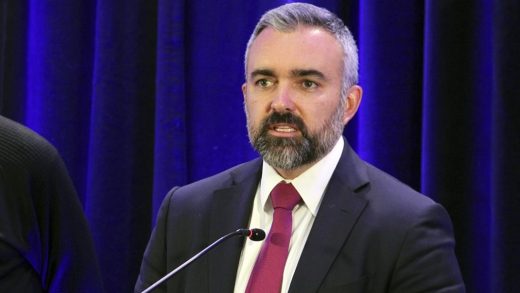European Central Bank set to outdo Fed with half-point hike

FRANKFURT, Germany (AP) — The European Central Bank is set for another large interest rate increase to fight painfully high inflation even after the U.S. Federal Reserve slowed its pace, a divergence that underlines Europe’s later start and could speed the euro’s rebound from recent lows against the dollar.
ECB President Christine Lagarde has made clear that a rate hike of half a percentage point is in the offing at the bank’s meeting Thursday “and possibly at the one after that, and possibly thereafter.”
The Bank of England also was expected to go big with a half-point hike Thursday, contrasting with the Fed’s decision Wednesday to slow its pace to a quarter-point.
The ECB started raising rates in July, four months after the Fed did, and from lower levels — including below zero for one of its key benchmarks. That means Europe’s bank may have further to go before it feels rates are high enough to cool off inflation — even though economic growth has slowed.
Officials said at their last meeting in December that rates will need to “rise significantly” to control inflation, which reached 8.5% in the 20 countries using the euro in January. That is well above the bank’s target of 2% considered best for the economy.
Market watchers will focus on Lagarde’s post-meeting news conference for any hints at how far the bank will go. Analysts say increases are likely at the next two meetings.
Inflation is slowing in both the U.S. and the eurozone but is still at levels that are unacceptable for central banks whose mandate is to keep price spikes under control.
The different pace of increases could have implications for the dollar, which has slid recently from 20-year highs against the euro as markets begin to assume the Fed is nearing peak rates while the ECB is raising them fast.
Rising rates in Europe increase returns on holdings priced in euros, hiking demand for the currency and its exchange rate. Both central banks had been making unusually large increases of a half- or three-quarters of a point to quickly get on top of inflation.
A stronger euro can help the ECB in its struggle against inflation by reducing the costs of imports, especially crude oil and fuels, because they are priced in dollars.
Analysts at Berenberg bank said that as the rate gap between Fed and ECB narrows, “the U.S. dollar will likely continue its slide into less overvalued territory to around $1.15 per euro at the end of 2023.” The euro sagged below $1 in July but has since risen to around $1.09.
The ECB’s moves raise more concerns about economic growth. Higher interest rates affect the cost of borrowing, making it more expensive for consumers to get a loan to buy houses or cars or for companies to get financing to expand.
Growth in the European economy is stagnant, expanding only 0.1% in the last three months of last year as high energy prices sapped consumer spending power and ate into company profits.
Natural gas prices increased after Russia cut off most supply to Europe amid the war in Ukraine. They have fallen from all-time highs during the summer as Europe found other suppliers and warmer-than-expected winter weather reduced the chance of shortages and rationing. But they’re still three times higher than when Russia massed troops on the border with Ukraine.
Bank officials say raising rates now will prevent even more painful credit restrictions that would be needed if inflation gets baked into the economy in wage increases and future price expectations.
The ECB’s benchmark for lending to banks stands at 2.5% ahead of the meeting. The rate on deposits left overnight by commercial banks is 2%. The key U.S. federal funds rate after Wednesday’s meeting is at 4.5% to 4.75%.
Credit: European Central Bank set to outdo Fed with half-point hike


